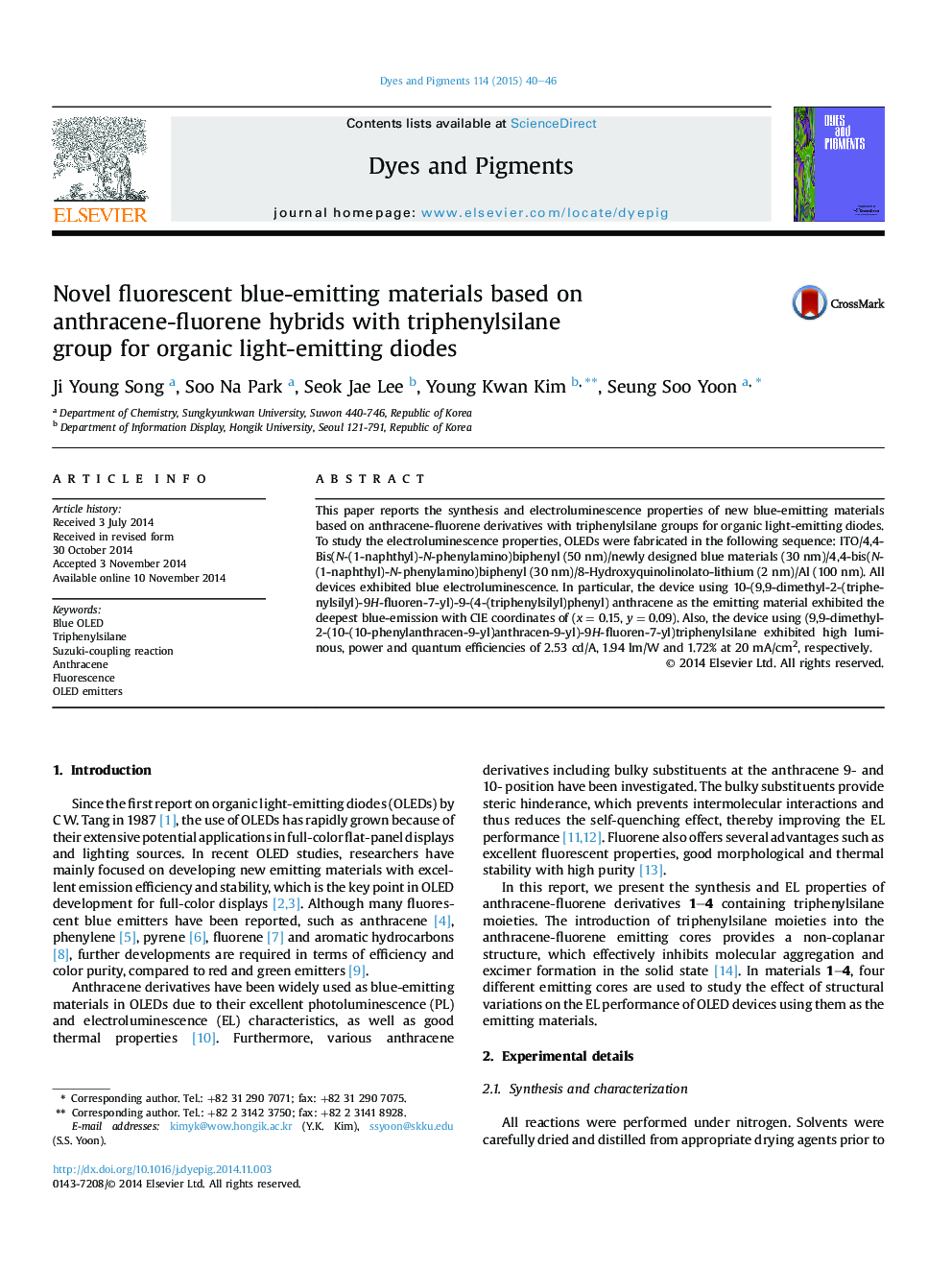| Article ID | Journal | Published Year | Pages | File Type |
|---|---|---|---|---|
| 175977 | Dyes and Pigments | 2015 | 7 Pages |
•Anthracene-fluorene derivatives with triphenylsilane groups were synthesized.•Four different emitting cores are used to study the effect of structural variations on the electroluminescence performance of OLED devices.•The introduction of triphenylsilane moieties into the anthracene-fluorene emitting cores provides non-coplanar structure, which effectively inhibits molecular aggregation and excimer formation in the solid state.
This paper reports the synthesis and electroluminescence properties of new blue-emitting materials based on anthracene-fluorene derivatives with triphenylsilane groups for organic light-emitting diodes. To study the electroluminescence properties, OLEDs were fabricated in the following sequence: ITO/4,4-Bis(N-(1-naphthyl)-N-phenylamino)biphenyl (50 nm)/newly designed blue materials (30 nm)/4,4-bis(N-(1-naphthyl)-N-phenylamino)biphenyl (30 nm)/8-Hydroxyquinolinolato-lithium (2 nm)/Al (100 nm). All devices exhibited blue electroluminescence. In particular, the device using 10-(9,9-dimethyl-2-(triphenylsilyl)-9H-fluoren-7-yl)-9-(4-(triphenylsilyl)phenyl) anthracene as the emitting material exhibited the deepest blue-emission with CIE coordinates of (x = 0.15, y = 0.09). Also, the device using (9,9-dimethyl-2-(10-(10-phenylanthracen-9-yl)anthracen-9-yl)-9H-fluoren-7-yl)triphenylsilane exhibited high luminous, power and quantum efficiencies of 2.53 cd/A, 1.94 lm/W and 1.72% at 20 mA/cm2, respectively.
Graphical abstractFigure optionsDownload full-size imageDownload as PowerPoint slide
